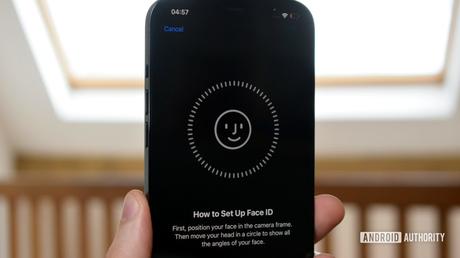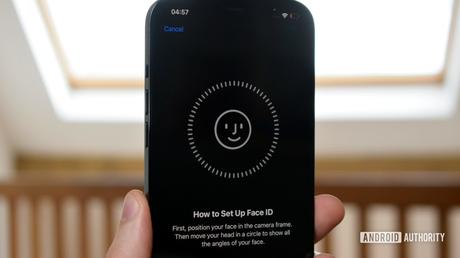

Face recognition technology is fast becoming the cornerstone of modern technological security solutions. Be it from simply unlocking your smartphone to registering access in and out of a secure office building. There's no denying that simply lifting the phone up to your face is far more convenient than finding the correct orientation of your fingerprints.
However, this is not necessarily the safest security option, especially if it relies on basic color camera technology that is easy to fool. Inexpensive but basic camera-based detection can be fooled with photos and other models. So you shouldn't trust it when trying to back up super sensitive data. This is one of the reasons we keep recommending the security conscious to use their phone's fingerprint scanner instead of the face unlock feature. Similarly, the image-based technology of most smartphones does not adapt to changing clothing habits, e.g. B. wearing new glasses or a face mask.
See also: How to use the face release while wearing a mask
Of course, there are already more secure 3D face mapping products on the industrial and gadget markets. Examples of smartphones are the Apple iPhone 12 series and the Huawei Mate 20 Pro. The 3D technology is much more secure against anti-spoofing, but the additional hardware is comparatively expensive. This is why so few manufacturers include the technology. 3D face mapping is also limited to short distances. Again, it can be difficult to adapt to changing facial features, and it doesn't always work as well in brighter lighting conditions.
Ideally, we need something more robust and flexible. One such company trying to do just that is Suprema - a world leader in commercial biometric solutions. The South Korean company has some very interesting next-generation facial recognition technologies in its portfolio that could point to the future of face unlocking on our devices.
Rather than using color camera image data like traditional face unlock methods, Suprema's face recognition system achieves classic color and near infrared (NIR) images of your face. Unlike some other systems on the market that use infrared data only for anti-spoofing, the use of black and white near infrared images (unfortunately not a Predator Vision with a heat map here) is an essential part of the system assessment. based verification system. The AI-based visual recognition connects the system with each other and analyzes this unique facial data with an extended spectrum for important facial profile features. So it cannot be fooled by pictures, sculptures etc. and works in all lighting conditions.
See also: The best phones with built-in fingerprint scanners
The combination of AI and multiple images also enables the technology to recognize mask-wearing faces, albeit with an increased rate of false acceptance and rejection. In fact, the system can be used to force markings to be worn when unlocking doors, etc. Impressively, the user doesn't even need to register an image of wearing a mask for this feature to work. The AI-based recognition system can still check a face based on visible features such as eyes.
Advanced new security features have a habit of accessing smartphones. Watch this room.
Currently, Suprema's NIR technology can only be found in the FaceStation 2 and F2 terminals (see the embedded video above). When asked about scaling the technology down to smaller devices, Suprema found that power consumption was the biggest barrier to introducing this technology into battery-powered devices. Suprema's AI algorithms are currently running on a graphics processor. However, lower power consumption could be achieved if these algorithms were instead transferred to neural processors. These functions are already available in mid-tier and premium smartphones. Importantly, biometric data and AI processing are currently being processed on the fringes to ensure sensitive information does not leave the device. The camera hardware only requires a resolution of 720p with a relatively large field of view, which is a very reasonable requirement according to modern technological standards.
Of course, Suprema isn't the only horse in the race to improve facial recognition technology. Trinamix introduced a face unlock sensor in early 2021 that can be hidden under a phone's OLED display. The company also offers skin detection features to aid in anti-spoofing. This skin detection idea consists of an infrared camera and a light projector that, in combination with intelligent algorithms and 3D sensor technology, identify and classify materials such as skin. Trinamix has also worked with Qualcomm to run its mapping algorithms on Snapdragon Hexagon DSPs. This proves that it is possible to run advanced classification algorithms on a wide variety of Android smartphones.
See also: Your next phone may have a face-unlock sensor under the display
In theory, IR facial recognition technology could provide televisions, laptops, smartphones, and more with convenient and secure face protection without the caveats and expense of current generation implementations. Technology is almost inevitably scaled down to reduce performance and costs. Not to mention, improvements in battery hardware and AI processing expand the possibilities for more sophisticated processing technologies, even in popular product markets. As we've seen many times in the past, security features have a habit of accessing smartphones. PINs from massive ATMs were making their way to lock screens, and fingerprint scanners from bulky accessories and laptops are now small enough to be embedded under a phone's display. Watch this room.
